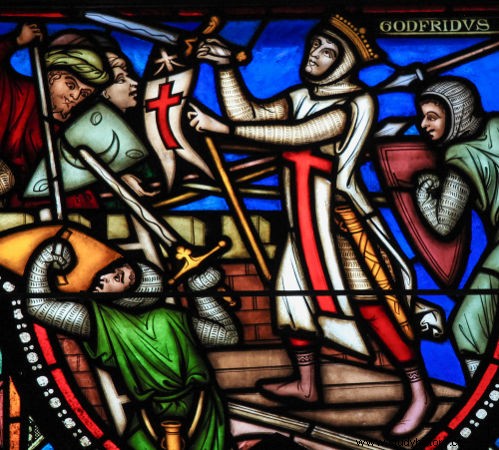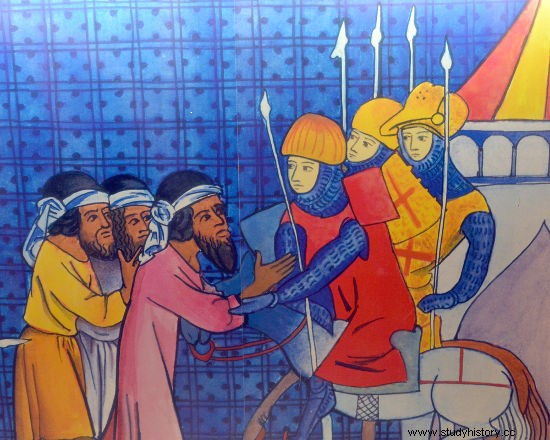
The Crusades were all military expeditions organized by the Catholic Church that took place between the 11th and 13th centuries. The purpose of these expeditions was to conquer the so-called Holy Land (the way Christians refer to Palestine) to create Christian kingdoms in the region.
Context and Invocation of the First Crusade
The city of Jerusalem it had been under Muslim control since the year 636, when Caliph Umar ibn al-Khattab had conquered the city from the Byzantines. In the 11th century, the Christian countries of Europe suffered from the expansion of the Muslim kingdoms, both in the Iberian Peninsula (a region where Portugal and Spain are located today) and in the lands of the Byzantine Empire , where the Turks were the threat. In this context, interest in regaining control of the so-called Holy Land begins to emerge in the Church. .
Furthermore, the Turks' control over Palestine also represented a way of repressing Christian pilgrims. The pilgrimage was something very common at that time, as it was seen as a way to forgive sins, however, the trip to Palestine (where the Holy Sepulcher was the most visited place) was very expensive, as pilgrims were subject to all sorts of threats, such as shipwrecks and looting, as well as being forced to pay tolls, depending on the region they were in.
In that context, a number of factors help explain the convening of the Crusades . In the case of the Church, it is speculated that Pope Urban II wished to channel the attention of Christians to fighting the “infidel” as a way of reducing conflicts and internal disputes among Christians themselves. In addition, aid to the Byzantines, who were suffering from the attacks of the Turks, could contribute to the unification of the Church, separated in 1054 between Roman Catholic Apostolic Church and Orthodox Catholic Apostolic Church . Other factors were the possibility of the Crusades motivating people through the promise of salvation and the remission of sins and also through the chance to obtain lands and riches from looting.
Also read: The Children's Crusade
The call to the Crusades took place on November 25, 1095, at the Council of Clermont, by Pope Urban II who, in his speeches, “promised that those who commit themselves to this cause in a spirit of penance would have their past sins forgiven and obtain full remission of earthly penances imposed by the Church” 1 . We perceive, therefore, that the Church promised salvation to all those who fought in the “defense of Christianity” . During this period, the concept of “Just War” was debated by the Church, in which every defense of Christianity against Muslims, called “infidels” was considered fair. In this way, the Church gave the go-ahead for its followers to fight (and kill) in its defense.
Crusade Balance

Templar soldiers in Acre, the last Christian stronghold **
After the call of the Crusades in 1095, it was not until 1099 that the Christian armies, formed mainly by French soldiers, managed to achieve a great achievement:the capture of the city of Jerusalem . The siege of this city, begun on June 7, 1099, ended with great violence , and a massacre was carried out by the Christian armies. Jerusalem would be reconquered almost a century later, in the year 1187, by Saladin's armies.
Over the years, the Christians were losing all the territories they had conquered during their expeditions, and the final balance of the Crusades was defeat, with the last stronghold of the Christians, called Acre , conquered in 1291 by the Egyptian Mamluks. The Crusades ended up widening the differences between Christians and Muslims , however, contributed to a great commercial impetus , which resulted in changes in medieval Europe, such as urban renaissance and the use of currency.
__________________________________
1
READ, Piers Paul. The Templars. Rio de Janeiro:Imago, 2001, p.82.
2
SILVA, Daniel Neves. The city in the middle of the world:representations of Jerusalem in the Late Middle Ages – 12th century.
*Image credits:Jorisvo and Shutterstock
**Image credits:Meunierd and Shutterstock
Take the opportunity to check out our video lesson related to the subject:
